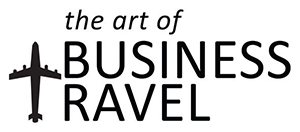![[UPDATED] Airlines to Enforce Masks on Flights](https://www.theartofbusinesstravel.com/wp-content/uploads/2020/05/woman-sitting-on-luggage-3943882-620x413.jpg)
Major airlines will require passengers to wear masks as they slowly recover from the impact of the global Covid-19 epidemic.
All of the major carriers in the US have implemented enhanced hygiene procedures to help bolster traveller confidence, with crew given personal protection equipment and planes, lounges and ticket counters cleaned more rigorously, but as nations attempt to ease their way out of lockdowns, airlines will require more active participation from the flying public.
“The American Airlines team continues to prioritize the safety of our customers and team members, and requiring a face covering is one more way we can protect those on our aircraft,” says Kurt Stache, senior vice president of Customer Experience at American Airlines.
READ: We Review Etihad’s Business Class on its 787 Dreamliner
American Airlines will soon require all travelling customers to wear a face-covering (or mask) while onboard aircraft starting May 11. This new requirement is part of the airline’s ongoing commitment to prioritizing customer and team member well-being in response to the coronavirus (COVID-19) pandemic.
“We ask customers to bring their own masks or face coverings they’re comfortable with when they travel. American is working to procure face masks and hand sanitizer as a supplement,” says Stache.
According to the Centers for Disease Control and Prevention (CDC), the use of a simple face-covering slows the spread of the virus and helps people who may have the virus and do not know it from transmitting it to others.
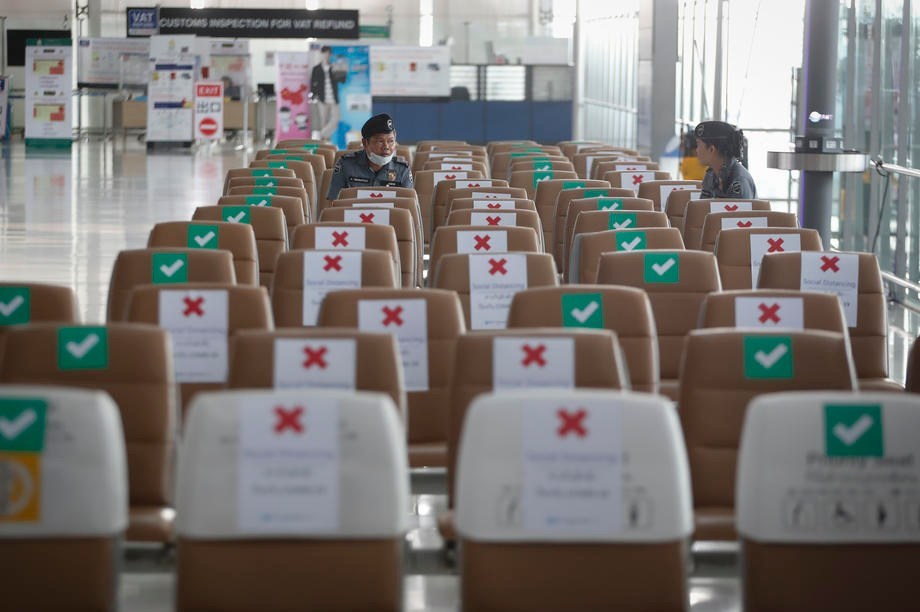
Cloth face coverings fashioned from household items or made at home from common materials can be used as a public health measure. A face covering will be required by each passenger while onboard an American flight, although very young passengers and those with conditions that prevent them from wearing a face-covering will be exempt from the requirement.
Earlier this week, American announced that face coverings will be required for flight attendants during every mainline and regional flight. Additionally, American will begin the process of distributing sanitizing wipes and face coverings to customers. This offering will expand to all flights as supplies and operational conditions allow.
At the airport, American has also expanded the frequency of cleaning the areas under its control including gate areas, ticket counters, passenger service counters, baggage service offices and team member rooms. American is also using stanchions to encourage social distancing at gates and ticket counters.
READ: AA Extends Elite Status & Other Rewards
American isn’t alone. Delta Air Lines will also require all customers to wear a face mask or appropriate face covering when traveling with the airline. This move comes on the heels of Delta’s earlier announcement requiring employees worldwide to wear face masks if they are unable to maintain six feet of distance with customers or each other.
“Nothing is more important than the health and safety of our people and our customers,” says Bill Lentsch, chief customer experience officer for Delta. “While we remain committed to our new standard of clean and to providing more space for our customers when they travel, we take seriously the CDC guidelines for adding this extra layer of protection. We believe this change will give customers and employees some additional comfort when traveling with us.”
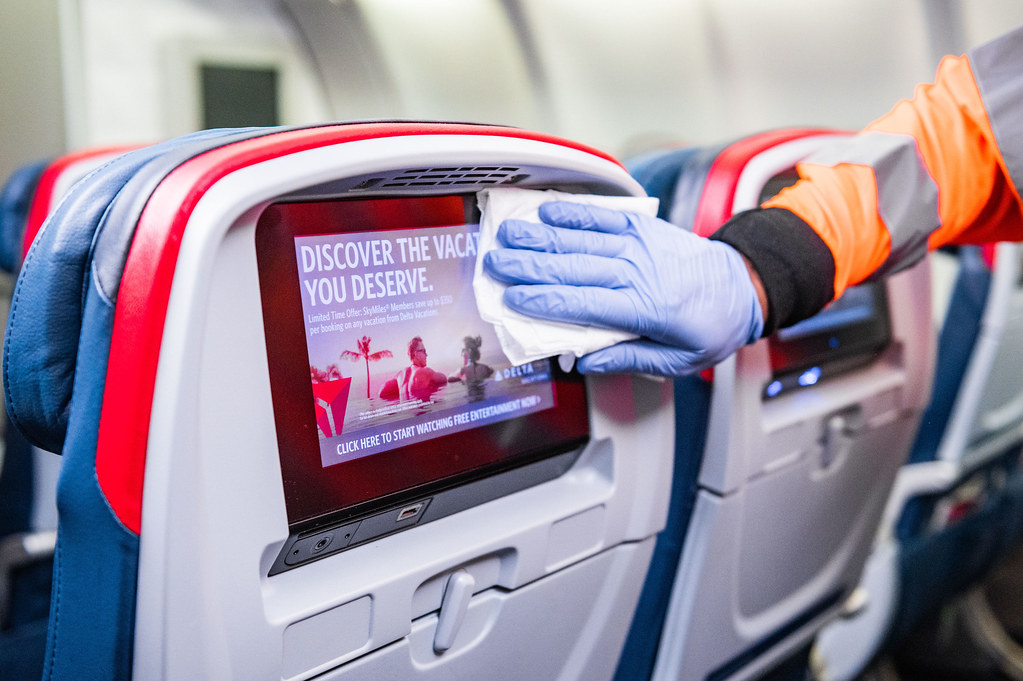
Face coverings will be required starting in the check-in lobby and across Delta touch points including Delta Sky Clubs, boarding gate areas, jet bridges, and onboard the aircraft for the duration of the flight – except during meal service. Their use is also strongly encouraged in high-traffic areas including security lines and restrooms. People unable to keep a face covering in place, including children, are exempt.
Other airlines making mask wearing a requirement include United, Jetblue, Alaskan, Southwest, and Frontier.
In Europe
In Europe, Air France has said it will require passengers to wear masks throughout their journey from May 11, following the French government’s instructions that everyone must wear a mask when travelling on public transport. In addition, all crew and agents in contact with customers must also wear masks as part of the airline’s efforts to combat the virus, which also include social distancing implementation at airports and on flights, the installation of Plexiglass protection screens at airports, and the reinforcement of regular aircraft cleaning.
READ: American Airlines’ Russ Fortson on Rebuilding After Covid-19
The carrier has also followed several other airlines in adapting its in-flight service to limit interaction between customers and crew members. On domestic flights and short flights in Europe, this means no meal and or beverage services, while on long-haul flights, cabin service will be limited, with preference given to individually wrapped products.
Finnair has also introduced a range of new Covid-19 safety measures, including the requirement of passengers and crew to wear face masks. Earlier in the year, the carrier implemented a seating policy that has passengers sitting as far from each other as possible, while also creating a no-touch policy for customer service personnel dealing with customers’ travel documents and baggage.
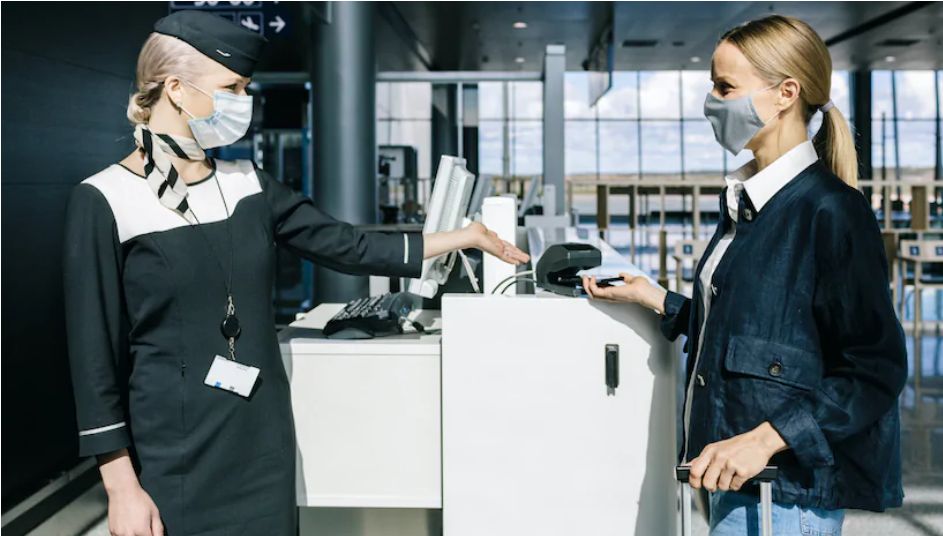
In a U-turn from previous rulings by the airline, passengers will now be required to wear masks for the duration of flights from May 18, with the policy expected to stay in effect until the end of August at the earlier. In addition, airport staff will wear masks, social distancing will be enforced at airports, and aircraft will be boarded from the rear.
Like many other carriers, Finnair has also enhanced its aircraft cleaning, with a special focus on high-touch areas.
In Asia
Cathay Pacific has also announced that all passengers and crew will be required to wear masks to reduce the risk of transmission of the virus on board. The airline, which was one of the first to leap into action and make changes to service procedures to reduce exposure to crew and passengers, says the temporary requirement will be applied to situations where passengers cannot maintain a physical distance of two metres from others, or as directed by airline employees. This includes during check-in; in Cathay lounges; during boarding; in the aircraft cabin; and during disembarkation.

The carrier also strongly recommends that face masks are used in high-traffic areas such as security lines and baggage collection areas. Passengers who are unable to tolerate a face mask, including young children, are exempt from this requirement.
Passengers will be required to supply their own appropriate face mask to wear throughout their journey, with both cloth and disposable masks deemed suitable. This face mask requirement will remain mandatory until further notice.
READ: We Check Into Zurich’s Hidden Urban Oasis
Cathay Pacific’s hub, Hong Kong International Airport, has also made the wearing of face masks by departing passengers compulsory from May 18. Passengers must wear masks in all restricted areas of the departure levels until further notice.
Hong Kong’s Airport Authority has made it compulsory for all airport staff and departing passengers to wear a face mask in the restricted area of the departure levels of HKIA, including automated people movers, transit buses, and the SkyPier Sea-to-Air levels, from 18 May 2020 and until further notice. Arriving passengers are also recommended to wear face masks upon their arrival at HKIA. Passengers are advised to bring their own face masks.
“The Airport Authority has been sparing no efforts in implementing different measures in HKIA to maintain a safe and hygienic environment for all airport users,” says Vivian Cheung, executive director, Airport Operations of the Airport Authority. “We are working hand-in-hand with our business partners to look at the entire passenger journey and explore possible enhancement measures, with a view to strengthening passengers’ confidence.”
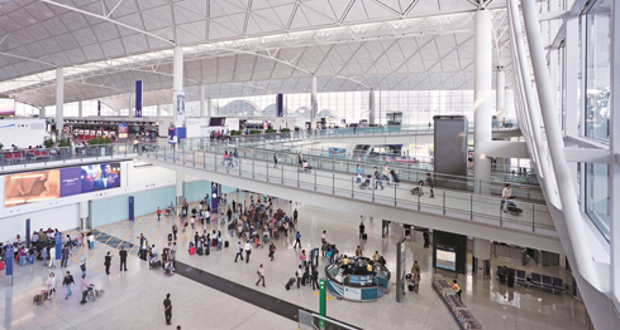
Meanwhile, body temperature screening has already been implemented at the entrances of the terminal buildings and restricted areas, as well as the arrivals levels.
However…
As face masks have been widely adopted in Hong Kong and many parts of Asia, there use is already the norm at the airport.
Despite airlines rapidly requiring passengers to wear masks, this policy is yet to be endorsed by the International Air Transport Association (IATA), the airline regulatory body, and some airlines have resisted the move. This includes Australian airline Qantas. “[There] are no requirements in Australia to wear masks. No decisions have been made by the Government or airlines about what measures will be put in place for travel once restrictions are lifted.” said the airline to the BBC. “While the risk of contracting coronavirus on board an aircraft is regarded as low, social distancing has been put in place across all flights.” It is currently following guidelines from Australia’s chief medical officer.
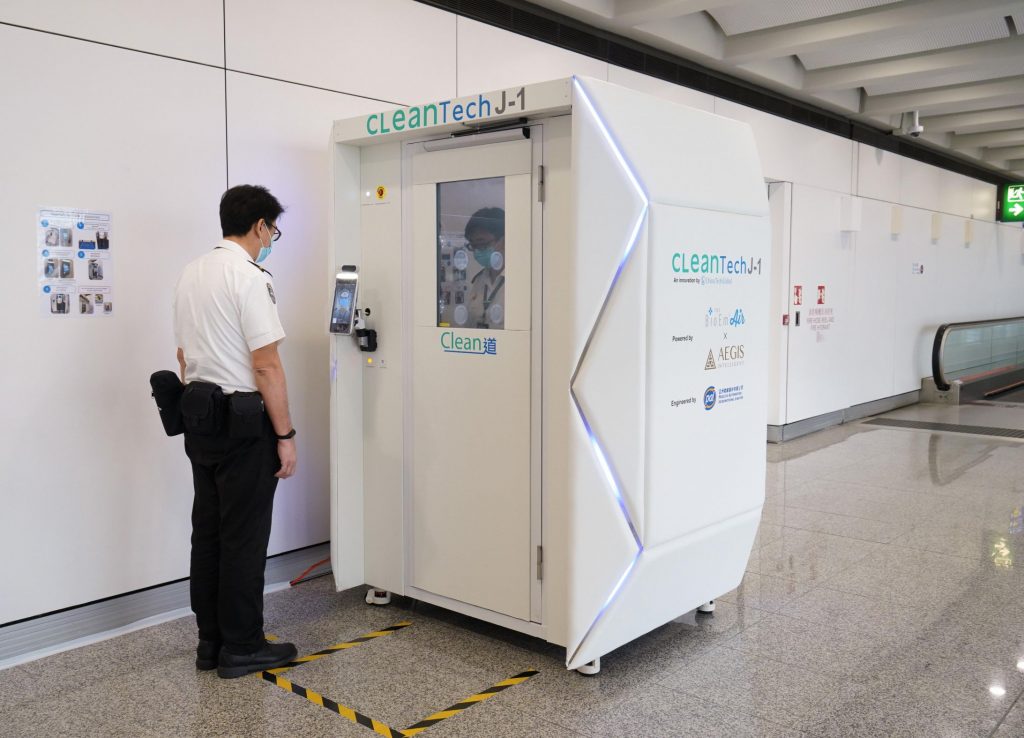
While many airlines say that wearing masks on flights will be a temporary measure, the policy hints at a new norm for post-Covid-19 travel that will include greater sanitation protocols onboard aircraft and within airports, social distancing at gates and in lounges, and additional screening at airports. Hong Kong International Airport is presently testing a new machine by CleanTech that offers full-body disinfection, killing bacteria on clothing and skin during a 40 section session.
Also in the Headlines…
Kempinski Launches White Glove Service Standards
